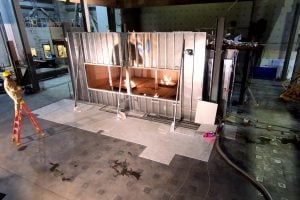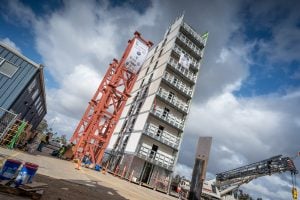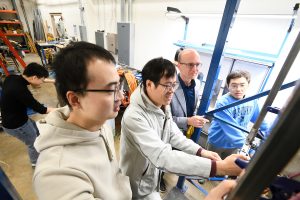While the emergence of megacities creates opportunities for a more connected, accessible, and diverse society, it also presents significant challenges, such as limited resources and increased susceptibility to natural and human-made disasters. Creative solutions will be needed to address the needs and expectations of urbanites living in extremely dense environments. In order to absorb shocks and recover quickly from disruptions, the urban infrastructure in these megacities must be smart, transformative, and resilient. Quantitative solutions to these challenges are only found through rigorous mechanics-based analyses and optimization-based decisions.
In particular, the department’s visionary research on future resilient cities tackles this challenge from a multi-scale perspective. At the small scale, the materials used to build infrastructure are at the core of its development, creating tremendous opportunities for formulating and adopting new structural and multifunctional material systems. At the intermediate scale, structural engineers invent the future buildings and infrastructure systems that must be resilient to extreme conditions, such as fire and earthquakes. At the largest scale, communities rely on decisions that support efficient transportation, energy, food, and healthcare networks, recognizing that these systems are strongly interconnected. Faculty engage in research and educational activities at all these scales.
RESEARCH EXAMPLES
- Stavros Gaitanaros’ research on additive manufacturing and characterization of architected materials aims to enable the design of novel material systems (metamaterials) with unprecedented mechanical, acoustic, and thermal properties.
- Thomas Gernay’s research recognizes the prevalence of fire as a compounding issue for most major natural and human-made disasters. His work attempts to increase the resilience of structures when exposed to fire through both experimental and computational studies that leverage his widely-adopted structural fire analysis code SAFIR.
- Lori Graham-Brady’s group develops stochastic simulation tools that allow representation of extreme events that have significant impact on urban resilience.
- Tak Igusa’s research on resilience includes the development of dynamic models for public agencies, such as the CDC and local governments, and multi-level models for repeated hurricanes and heat waves.
- Ben Schafer’s research emphasizes the application of new, efficient, sustainable, and resilient lightweight building systems to the built environment. His work focuses on enabling structural engineers to better design buildings for resilience and response under extreme hazards, especially earthquakes. In addition, his teaching focuses on the history of structures, with an emphasis on the social and urban contexts in which structural evolution has prospered in the past.
- Michael Shields’ research develops strategies to account for the uncertain conditions faced by civil structures and systems throughout their lifetimes, facilitating risk- and reliability-based design and analysis, and quantifying the influence and likelihood of rare/extreme events. Shields tackles the problem from both a modeling and experimental perspective, exploring stochastic models of engineering structures and experiments targeted at understanding uncertainties in material properties and structural loads; for example, through wind-tunnel testing.



